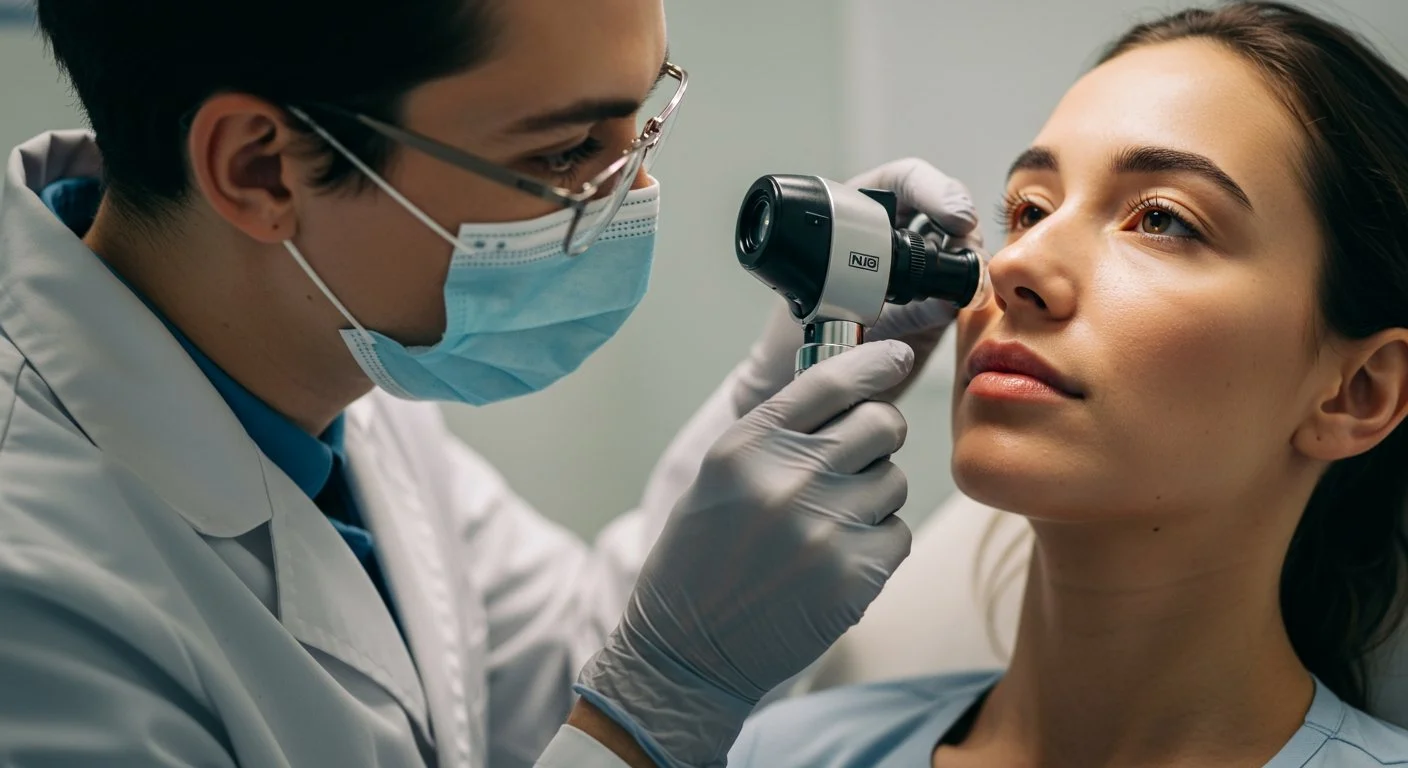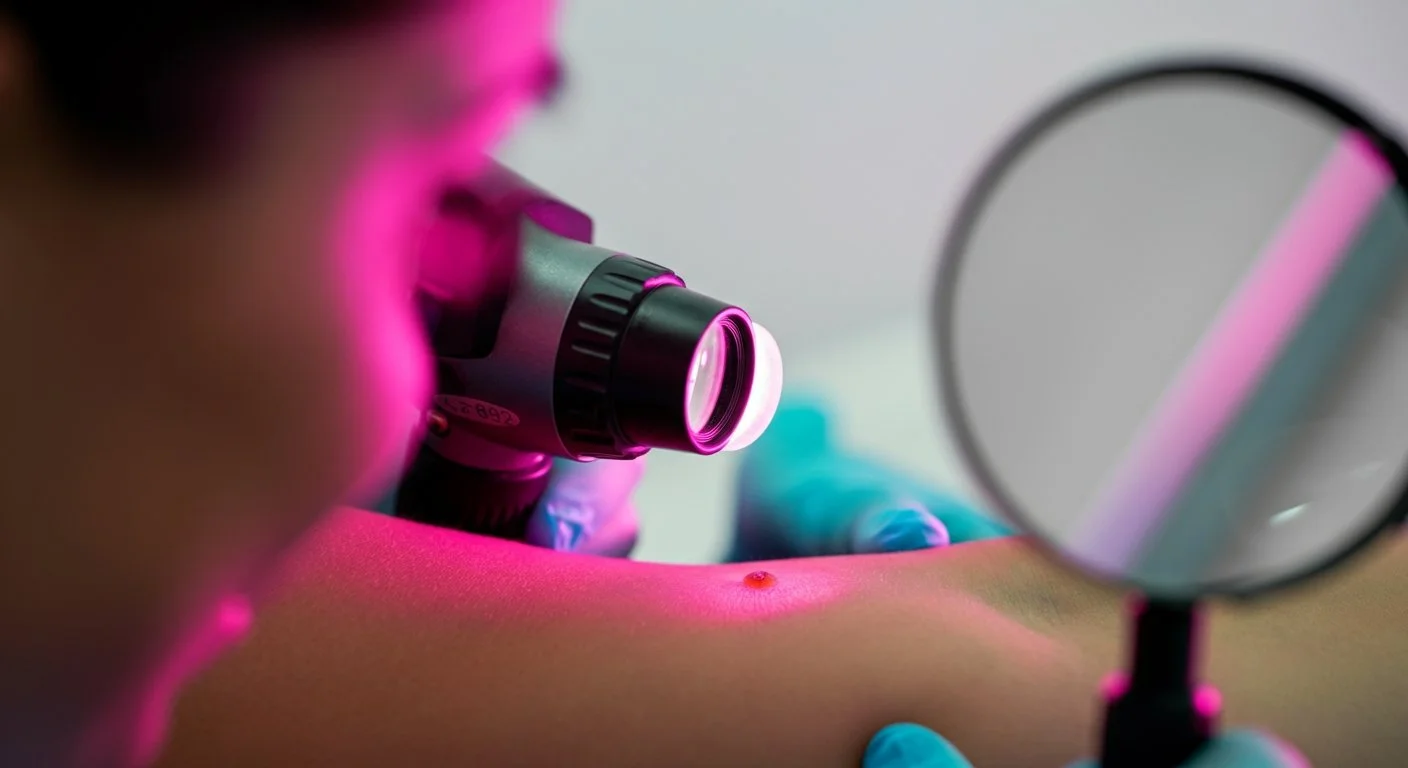Melanoma Screening: Your Complete Guide to Early Skin Cancer Detection
When was the last time you had a professional melanoma screening? If you're struggling to remember, you're not alone—but you might be putting your health at risk. Melanoma, the most dangerous form of skin cancer, is highly treatable when caught early, with a five-year survival rate exceeding 99% for localized cases. However, when detected late, that number drops dramatically. The good news? A simple, painless screening can make all the difference between early intervention and serious health complications.
Regular melanoma screening isn't just for people with obvious skin concerns. With skin cancer rates rising year after year, and one in five Americans expected to develop some form of skin cancer in their lifetime, professional skin examinations have become an essential part of preventive healthcare. Whether you have fair skin, a family history of melanoma, or simply spend time outdoors, understanding the importance of melanoma screening could literally save your life.
What Is Melanoma Screening and Why Does It Matter?
Melanoma screening is a comprehensive skin examination performed by a board-certified dermatologist to detect early signs of skin cancer. Unlike self-examinations at home, professional screenings use specialized tools and expert clinical judgment to identify suspicious moles, lesions, or skin changes that might indicate melanoma or other forms of skin cancer.
The Power of Early Detection
Early detection through regular melanoma screening dramatically improves treatment outcomes. When melanoma is caught in Stage 0 or Stage I, the cancer is confined to the outer layers of skin and hasn't spread to lymph nodes or other organs. At this stage, treatment is often as simple as surgical removal of the affected area, with minimal scarring and excellent prognosis.
The statistics tell a compelling story. According to the American Cancer Society, the five-year survival rate for melanoma detected early is 99%. However, if the cancer spreads to regional lymph nodes, that rate drops to 68%. When melanoma metastasizes to distant organs, survival rates plummet to just 30%. These numbers highlight why annual screenings aren't just recommended—they're potentially life-saving.
Who Needs Melanoma Screening?
While everyone benefits from skin awareness, certain individuals face higher melanoma risk and should prioritize regular professional screenings:
High-Risk Individuals: People with fair skin that burns easily, red or blonde hair, blue or green eyes, and a tendency to freckle face elevated risk. Those with a history of severe sunburns, especially during childhood, or extensive tanning bed use also need vigilant monitoring.
Personal and Family History: If you've had any form of skin cancer previously, your risk of developing another increases significantly. A family history of melanoma, particularly in first-degree relatives, also raises your risk level.
Mole Characteristics: Individuals with numerous moles (more than 50), large moles present at birth, or atypical moles with irregular shapes or colors should undergo regular professional examination. At Advanced Dermatology & Aesthetic Medicine, our board-certified dermatologists Dr. Monica Rani and Dr. Stavonnie Patterson specialize in evaluating concerning skin changes and providing expert diagnosis.
Sun Exposure and Environment: People who work outdoors, live in sunny climates, or have significant cumulative sun exposure throughout their lives need consistent screening. Even if you're diligent about sun protection now, past exposure creates lasting risk.
The Melanoma Screening Process: What to Expect
Understanding what happens during a professional melanoma screening helps reduce anxiety and ensures you're prepared for your appointment. The process is thorough, non-invasive, and typically takes 15-30 minutes depending on your skin's complexity.
Comprehensive Visual Examination
Your dermatologist will examine your skin from head to toe, literally. This includes areas you might not expect—your scalp, between your toes, under your nails, and even areas that rarely see sunlight. Melanoma can develop anywhere on the body, not just sun-exposed areas.
During the examination, your dermatologist looks for the ABCDE warning signs of melanoma:
A - Asymmetry: One half of the mole doesn't match the other half
B - Border irregularity: Edges are ragged, notched, or blurred
C - Color variation: Multiple colors or uneven color distribution
D - Diameter: Larger than 6mm (about the size of a pencil eraser)
E - Evolving: Any change in size, shape, color, or symptoms like itching or bleeding
Dermoscopy: Advanced Diagnostic Technology
Board-certified dermatologists use a specialized instrument called a dermatoscope—a handheld magnifying device with powerful lighting that allows examination of skin structures beneath the surface. This technology significantly improves diagnostic accuracy, helping distinguish between benign moles and potentially cancerous lesions.
Dermoscopy enables your dermatologist to see patterns and features invisible to the naked eye, reducing unnecessary biopsies while ensuring suspicious lesions receive appropriate attention. This advanced approach combines clinical expertise with cutting-edge technology for the most accurate assessment possible.
Digital Mole Mapping
For patients with numerous moles or high melanoma risk, digital mole mapping creates a comprehensive photographic record of your skin. This technology tracks changes over time, making it easier to identify new or evolving lesions during future screenings. Many dermatology practices now offer this service as part of comprehensive melanoma surveillance programs.
What Happens If Something Suspicious Is Found?
Discovering a concerning lesion during your screening doesn't necessarily mean you have melanoma, but it does require further evaluation. Here's what typically happens next:
The Biopsy Process
If your dermatologist identifies a suspicious area, they'll recommend a skin biopsy to determine whether the cells are cancerous. A biopsy involves removing all or part of the suspicious lesion for laboratory analysis. The procedure is performed in-office under local anesthesia and typically takes just minutes.
There are several biopsy types depending on the lesion's characteristics:
Shave Biopsy: A thin layer of skin is removed for examination, appropriate for raised lesions
Punch Biopsy: A small circular tool removes a deeper sample of skin
Excisional Biopsy: The entire lesion plus a margin of surrounding healthy tissue is removed—often used when melanoma is strongly suspected
After the biopsy, the tissue sample goes to a specialized pathology laboratory where experts examine the cells under a microscope. Results typically return within one to two weeks, providing a definitive diagnosis and, if cancer is present, important information about the stage and type.
Understanding Your Results
If the biopsy confirms melanoma, your dermatologist will explain the diagnosis in detail, including the type of melanoma, its depth (Breslow thickness), whether it has spread, and what treatment options are appropriate. Early-stage melanomas often require nothing more than complete surgical removal with clear margins to ensure all cancer cells are eliminated.
More advanced cases might require sentinel lymph node biopsy to determine if the cancer has spread, or additional treatments such as immunotherapy, targeted therapy, or radiation. However, when melanoma is caught through regular screening, the vast majority of cases are early-stage and highly treatable.
Between Screenings: Self-Examination and Prevention
Professional melanoma screening is essential, but what you do between appointments matters just as much. Developing awareness of your own skin and taking protective measures significantly reduces your melanoma risk.
Monthly Self-Examinations
Perform a thorough self-examination once a month, checking every area of your body in good lighting using a full-length and hand mirror. Look for new moles or changes in existing ones, following the ABCDE criteria. Pay special attention to areas that receive the most sun exposure—face, neck, arms, and legs—but don't neglect commonly overlooked spots like your scalp, ears, soles of feet, and spaces between fingers and toes.
Take photos of concerning areas to track changes over time. If you notice anything new or evolving, don't wait for your next scheduled screening—contact your dermatologist promptly. Early detection between appointments can make a significant difference in outcomes.
Sun Protection: Your Daily Defense
Prevention remains the most effective strategy against melanoma. Comprehensive sun protection should be a daily habit, not just something you remember at the beach.
Daily Sunscreen Application: Use a broad-spectrum sunscreen with SPF 30 or higher every single day, even when it's cloudy or you're primarily indoors. UV rays penetrate windows and can cause cumulative damage. The ADAM Invisible Shield SPF 50 offers high-level protection with a lightweight, invisible finish that works beautifully under makeup and won't leave a white cast on any skin tone.
For those with sensitive or acne-prone skin, consider the EltaMD UV Clear Broad Spectrum SPF 46 Tinted, which contains zinc oxide for physical sun protection plus niacinamide to help control oil production and reduce inflammation.
Protective Clothing and Accessories: Wear wide-brimmed hats, sunglasses with UV protection, and sun-protective clothing when spending extended time outdoors. Seek shade during peak sun intensity hours (10 AM to 4 PM).
Avoid Tanning Beds: Indoor tanning significantly increases melanoma risk. The UV radiation from tanning beds is classified as carcinogenic, with users experiencing a 75% increased risk of melanoma when they start tanning before age 35.
Supporting Your Skin Health
Beyond sun protection, maintaining overall skin health through quality skincare supports your body's natural defenses. The ADAM Triple Antioxidant Cream provides powerful antioxidant protection to help neutralize free radicals caused by UV exposure and environmental pollutants. Rich in green tea polyphenols, resveratrol, and caffeine, this daily cream helps minimize sun damage at the cellular level.
For comprehensive skin repair and maintenance, the ADAM Biocell Repair Moisturizer harnesses plant peptides to support skin cell renewal and repair damage from environmental stressors.
How Often Should You Get Screened?
Screening frequency depends on your individual risk factors, but general guidelines provide a useful starting point:
Annual Screenings for Most Adults: The American Academy of Dermatology recommends annual full-body skin examinations for all adults, particularly those over 40 or with any melanoma risk factors.
More Frequent Monitoring for High-Risk Individuals: If you have a history of skin cancer, numerous atypical moles, significant sun damage, or strong family history of melanoma, your dermatologist may recommend screenings every 3-6 months.
Baseline Examination for Young Adults: Establishing a baseline comprehensive skin examination in your 20s or early 30s creates a reference point for tracking changes throughout your life, especially if you have numerous moles or fair skin.
During your screening at Advanced Dermatology & Aesthetic Medicine, Dr. Monica Rani or Dr. Stavonnie Patterson will assess your individual risk factors and recommend an appropriate follow-up schedule tailored to your specific needs. Their combined expertise in medical dermatology and commitment to patient education ensures you receive the most comprehensive care available.
The Role of Technology in Modern Melanoma Detection
Melanoma detection has advanced significantly with technological innovation. Artificial intelligence algorithms now assist dermatologists in analyzing skin lesions, improving diagnostic accuracy and reducing unnecessary biopsies. While these tools enhance clinical decision-making, they don't replace the expertise and judgment of board-certified dermatologists—they augment it.
Total body photography systems create detailed visual records of your entire skin surface, stored digitally for comparison at future appointments. This technology excels at detecting new lesions and tracking subtle changes in existing moles that might otherwise go unnoticed.
Genetic testing can identify individuals with inherited mutations that increase melanoma risk, allowing for more intensive screening protocols and preventive strategies. While not appropriate for everyone, genetic counseling and testing may benefit those with strong family histories of melanoma or multiple family members with skin cancer.
Common Melanoma Screening Questions Answered
How long does a melanoma screening take?
A thorough full-body skin examination typically takes 15-30 minutes, depending on how many moles you have and whether any require closer inspection with dermoscopy. If you have numerous moles or specific concerns, allow extra time for detailed evaluation and discussion with your dermatologist.
Is melanoma screening covered by insurance?
Most health insurance plans cover annual skin cancer screenings, especially for individuals with risk factors such as personal or family history of skin cancer, numerous moles, or previous abnormal findings. At Advanced Dermatology & Aesthetic Medicine, we accept most major insurance plans. Contact your insurance provider to verify coverage details, and our office staff can help you understand your benefits.
What should I do to prepare for my screening?
Remove all makeup and nail polish before your appointment, as dermatologists need to examine your skin and nails thoroughly. Wear your hair down so your scalp can be easily examined. Come prepared to discuss any new or changing moles, your sun exposure history, and any family history of skin cancer. Bring a list of current medications, as some can increase sun sensitivity.
Can melanoma develop in areas that don't get sun exposure?
Yes, melanoma can appear anywhere on the body, including areas that rarely or never see sunlight. This includes the soles of feet, palms of hands, under nails, mucous membranes, and even internal organs in rare cases. This is why comprehensive full-body examinations that check every area of skin are so important.
What's the difference between melanoma and other skin cancers?
Melanoma develops in melanocytes, the cells that produce skin pigment. It's the most dangerous type of skin cancer because it's more likely to spread to other parts of the body if not caught early. Basal cell carcinoma and squamous cell carcinoma—the other main types of skin cancer—grow more slowly and rarely metastasize, though they still require treatment. During your screening, your dermatologist evaluates for all types of skin cancer, not just melanoma.
Your Comprehensive Screening Summary
Key Takeaway: Regular melanoma screening with a board-certified dermatologist is your most powerful tool for early skin cancer detection. When caught early, melanoma has a 99% survival rate—making annual screenings a simple yet potentially life-saving investment in your health. Combine professional examinations with monthly self-checks, daily sun protection, and quality skincare for comprehensive melanoma prevention.
Professional melanoma screening involves a thorough head-to-toe examination using advanced tools like dermoscopy to identify suspicious lesions that require further evaluation. High-risk individuals—including those with fair skin, numerous moles, family history, or significant sun exposure—should prioritize annual or more frequent screenings. Between appointments, practice monthly self-examinations and protect your skin daily with broad-spectrum SPF 30+ sunscreen.
Take Action for Your Skin Health Today
Don't wait for concerning symptoms to appear before scheduling your melanoma screening. Early detection is key, and many melanomas develop without obvious warning signs until they've progressed beyond the most treatable stages.
At Advanced Dermatology & Aesthetic Medicine, our board-certified dermatologists Dr. Monica Rani and Dr. Stavonnie Patterson bring decades of combined experience in comprehensive skin cancer screening and medical dermatology. Using state-of-the-art diagnostic tools and a patient-centered approach, we provide thorough examinations that give you confidence in your skin health.
Located in Chicago's South Loop, our practice offers convenient scheduling and personalized care tailored to your individual risk factors and concerns. We accept most major insurance plans and work with you to ensure you receive the preventive care you deserve.
Schedule your melanoma screening today by calling our office or booking online through our appointment system. Your skin is your body's largest organ—protect it with professional care and evidence-based prevention strategies. Early detection saves lives, and your annual screening could be the most important appointment you make this year.
For more information about protecting your skin health, explore our related articles on sun protection for oily skin, beach skincare essentials, and summer skincare for sensitive skin. Building comprehensive skin health habits today creates lasting benefits for years to come.




